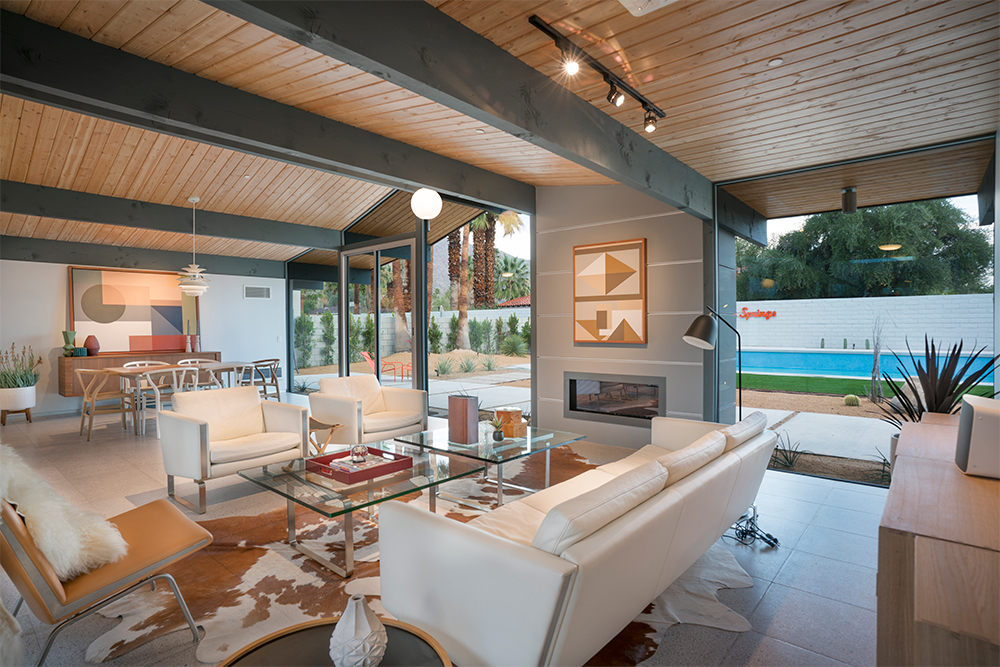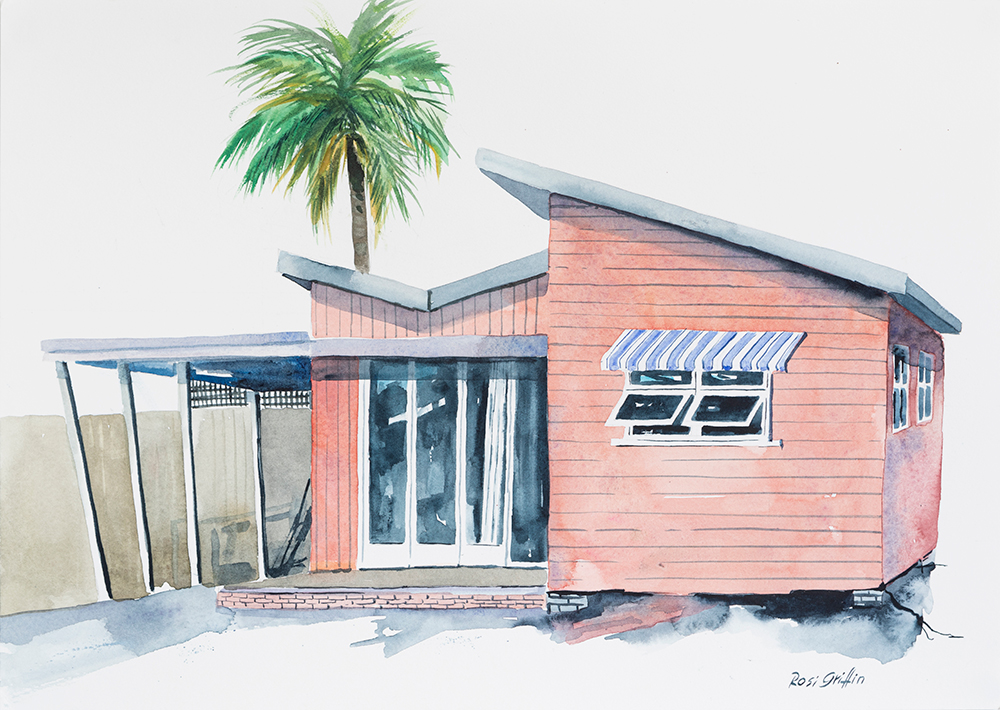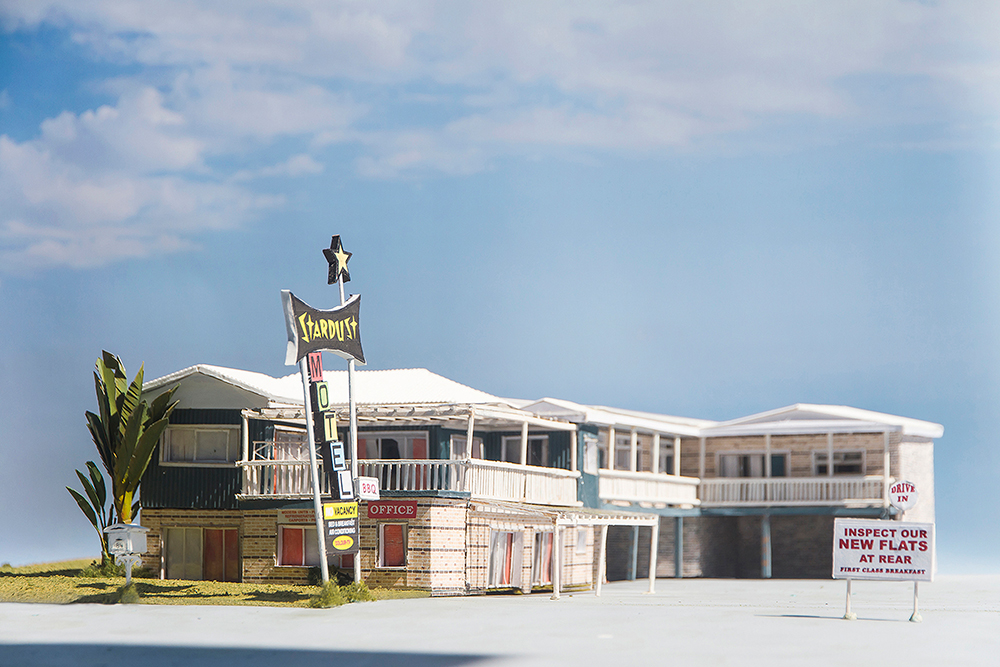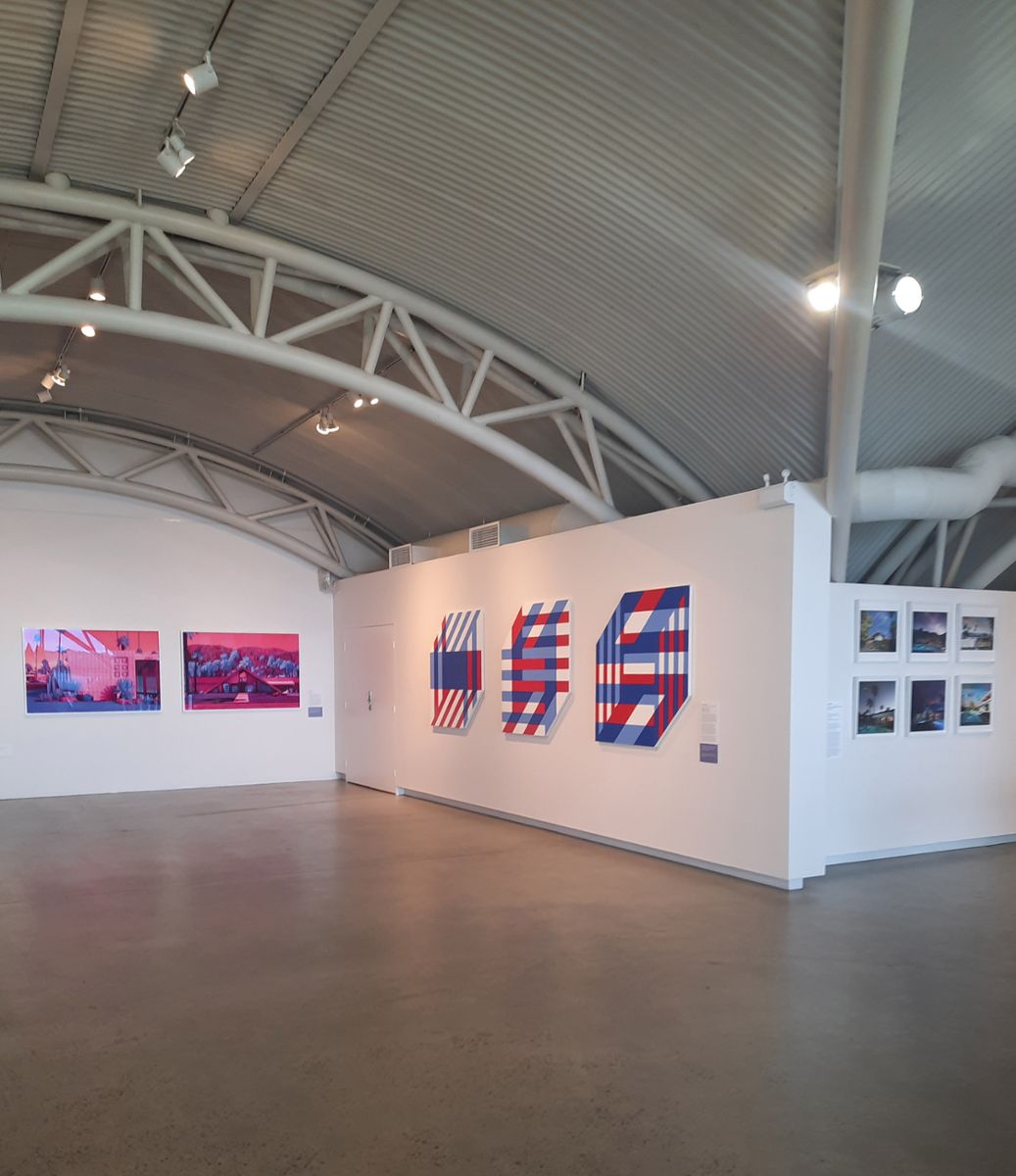
The touring exhibition Lost in Palm Springs, currently at Signal Point Gallery in Goolwa (its only South Australian venue), is an outcome of curator Dr Greer Honeywill’s lifelong passion for modernism: a style that grew out of the German Bauhaus philosophy that when form follows function, beauty and art are the outcome.
By the 1950s, modernism matured into what is now the sought-after mid-century modern style. It was embedded in the design of everything, from residential architecture, landscape architecture, furniture and household utensils to surface textures that are simple and free of affectation. Open, uncluttered spaces brought the outside in while taking the inside out. Lost in Palm Springs explores this development, as well as its current perspectives. Photos and videos of 1920s–1940s ‘shacks’ that are a short drive from Palm Springs in California, are shown alongside plans and images of 1950s and 1960s domestic residences in Palm Springs, where the architectural ideas first garnered world attention.
Together, the mix of works by fourteen artists and architects, nine from Australia and five from the United States, celebrate the development of the style in both countries. Although adjustments to local environments and cultures created variations, Palm Springs and the Gold Coast in Queensland were strongly related, as the exhibition and its excellent catalogue make clear. It is also interesting to see these ideas displayed in the architectural setting of Signal Point Gallery with its own strong steel and corrugated forms.


For architects, artists and designers, the excitement of modernism was in the nature of scale, space and place. Doors and walls opened out to make visible the connection between inside and outside, creating relationships between built form and place. The sliding glass door and large picture windows became a key element of home design. The representation of nature and life in paintings and sculptures became redundant as abstraction was understood to offer greater insight into the human condition than representational art could.
On a personal note, the exhibit brought me back to when I was starting out as an artist in Adelaide in the 1960s, before moving to the United States for fourteen years. It was a time when I became keenly aware of architecture and architectural spaces, and the need to integrate artworks within that context. Those influences have stayed with me: space and scale, interior and exterior, abstract and universal, all connected to create an experience of completeness. It was a time when art, design and living could come together as one.
For many local audiences, the fragile and modest coastal homes in Australia, are the most familiar form of mid-century modernism, linked to sunshine and carefree, outdoor living. Watercolours by Rosi Griffin refer to their tenuous durability that also reflect the casual nature of Australian culture. The artists Kate Ballis, Robyn Sweaney and Vicki Stavrou highlight in their works the bold abstraction of the architecture. Sam Cranstoun and Jim Isermann celebrate the style’s characteristic of paring design down to its essence. Anna Carey, Tom Blachford and Gosia Wlodarczak show the function of lived spaces with human interaction. Darren Bradley and Troy Kudlac present the formal, classic base of the design style while Kim Stringfellow and Lance O’Donnell remind us of its origins as ‘the humble positioned within the grand’. Paul Davies’ work focuses on the ambition of the idea: integrating the built form for home living within a grand landscape.
The Bauhaus first defined its art and design philosophy for the modern era over a century ago, and it has been around seventy years since Palm Springs and the Gold Coast, followed by regional areas around Australia, first took up the modern style. In 2024, Lost in Palm Springs is a celebration of the period style’s enduring relevance and strength.

